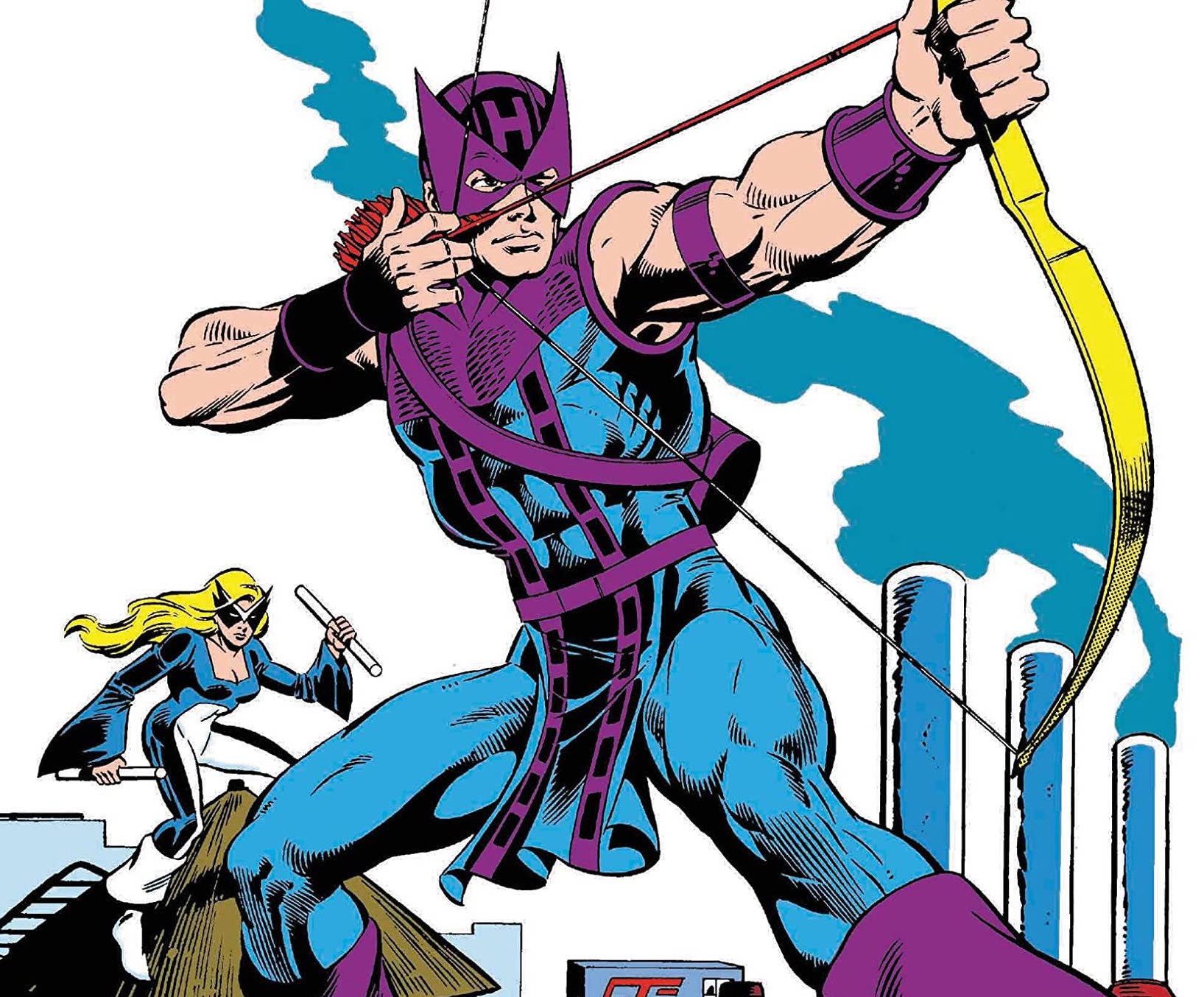We are living through a true Hawkeye Renaissance, a golden age of purple-themed archery, character flaws, and general bare-competence. The golden era started—as disrespectful as this sounds—with Clint Barton’s death-by-ex-crush in Avengers #500 (2004). It accelerated with Kate Bishop’s debut a year later, in Young Avengers #1, and it reached cruising speed with Fraction/Aja’s Hawkeye seven years later. The recent Disney+ show may or may not be the Hawkeye critical mass.
But Clint Barton debuted almost exactly forty years before Avengers #500, nearly at the beginning of the Marvel Universe. There are very few points in the timeline of the company where Hawkeye wasn’t being used by one creator or another—whether it be in the Avengers or in forgotten issues of Marvel Team-Up. The Marvel fandom marks him as appearing in over fifteen hundred issues.

Marvel Comics
Yet nearly none of those stories truly launched Clint to the forefront; he remained a niche fan-favorite, relegated to the bottom rungs of Avengers lineups. Hawkeye Epic Collection: The Avenging Archer provides ample evidence of how great the character was all the way up to the copper age, but it also highlights that there was little to the character at the time that demanded he take the spotlight.
Due to his long, long history, the book struggles to pinpoint one single era of the character to focus on, instead sampling a variety of Clint stories that span twenty-four years, up to and surpassing his first time in a solo series.

Marvel Comics
This sporadic collection does as much to showcase the shift in tone and structure of Marvel comics in that time as it does illustrate the somewhat shallow characteristics of its titular character. It’s more a sampler platter than a complete accounting. His origin is supplied, as is his first issue as an Avenger; we see the beginning of his tenure as Giant-Man but skip any of the stories following.
The most complete snapshot of the hero is found at the end of the book, with that solo miniseries. Released before Clint’s tenure on the West Coast Avengers (a book that pushed him closer to the front), Mark Gruenwald’s definitive miniseries set out to supply some of the things missing from the character up to that point.

Marvel Comics
Somewhat bafflingly, Gruenwald set out to do so by highlighting Clint’s terrible luck with women…and supplying him a wife. It is the story of how he meets Bobbi Morse, aka Mockingbird. In doing so, he doubles down on the lone characteristic Hawkeye could be said to have at the time: he was a pouting ass.
It’s a fairly well-captured era of the character (finally), with Bobbi stories to give it context and an issue of Gruenwald’s Captain America to extend Clint and Bobbi’s troubles with the rather goofy villains after the miniseries conclusion.
Ultimately, that loose sampling of stories is capped by the beginning of the first golden age of Hawkeye. After the events cataloged here, Clint flourished, however briefly, and managed to stick with readers and creators all the way through the rough, barren 1990s.
Join the AIPT Patreon
Want to take our relationship to the next level? Become a patron today to gain access to exclusive perks, such as:
- ❌ Remove all ads on the website
- 💬 Join our Discord community, where we chat about the latest news and releases from everything we cover on AIPT
- 📗 Access to our monthly book club
- 📦 Get a physical trade paperback shipped to you every month
- 💥 And more!













You must be logged in to post a comment.